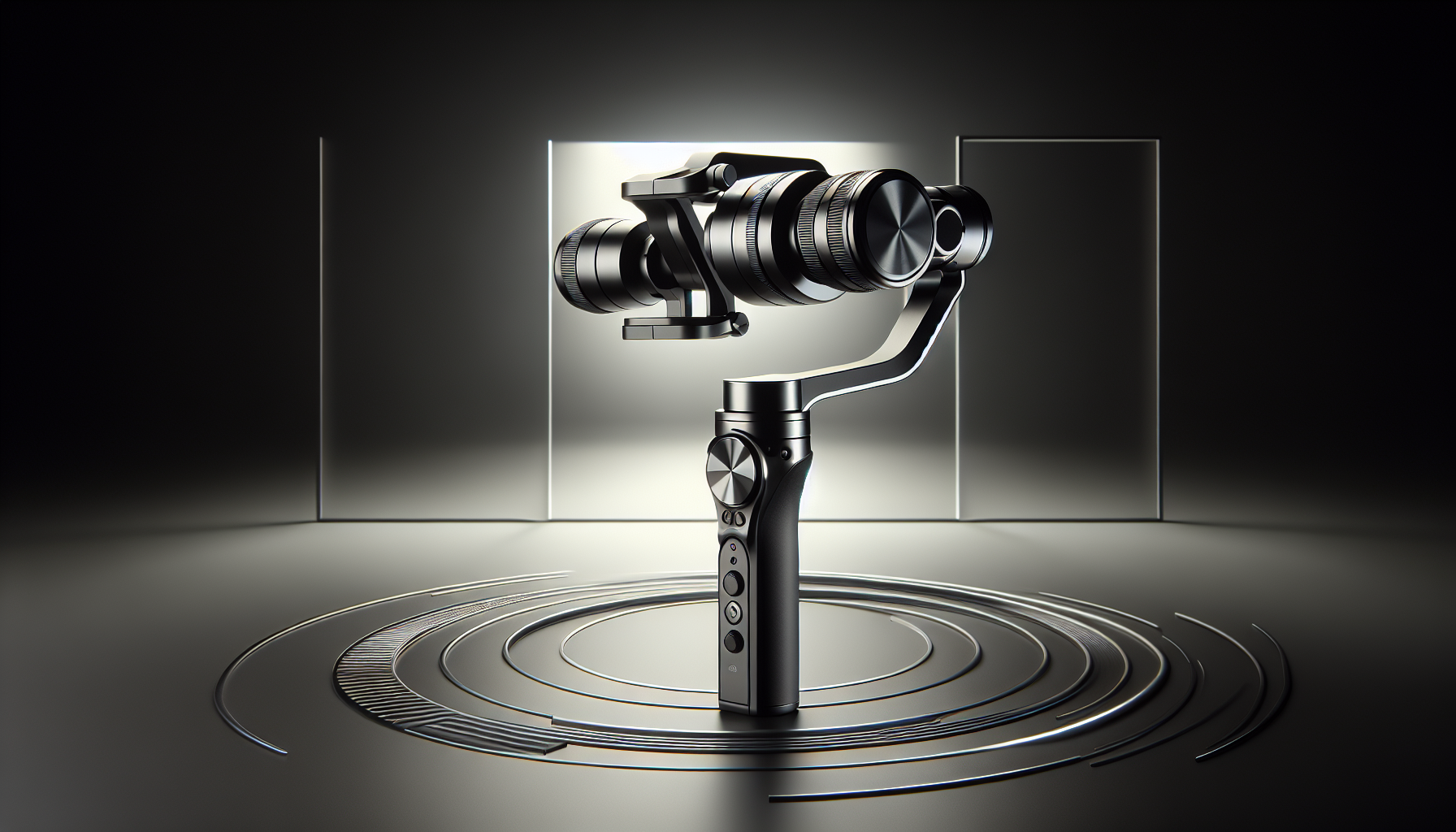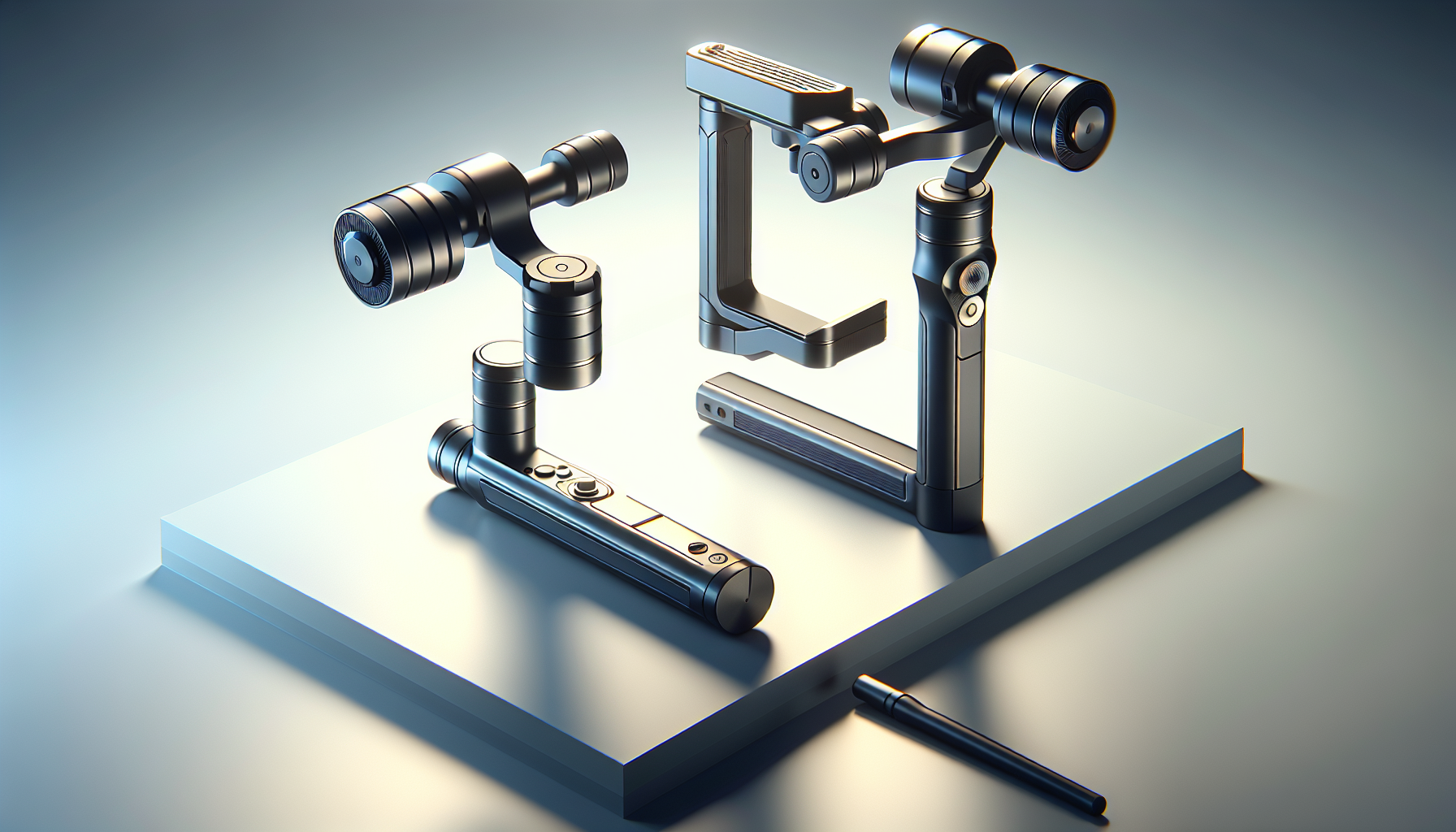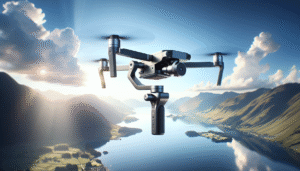Have you ever found yourself captured by the possibilities of filming, wondering whether a 2-axis or 3-axis gimbal might be the unsung hero of your next video masterpiece? As someone who’s grappled with the shakes and jitters of raw footage, I’m here to tell you: the choice between these two gimbals isn’t just technical jargon; it’s about elevating every frame you capture. Let’s pause for a moment and unravel the nuances between these two tools. By diving deep into their characteristics, you’ll be poised to make an informed decision; one that suits both your creative vision and technical needs.

Understanding the Basics: What is a Gimbal?
Before we submerge into the specifics, let’s clarify what a gimbal actually is. At its core, a gimbal is a pivoting support that allows an object to rotate around an axis. In the world of filmmaking and photography, gimbals are used to stabilize cameras, ensuring smoother and more professional-looking footage. The primary role of a gimbal is to counteract any unwanted movement, enabling you to capture steady video while in motion.
Why Gimbal Stabilization Matters
Picture a scene from the last action-packed movie you watched. Chances are the camera movements were seamless. The camera might have been jumping, running, or even flying around, but the footage remained perfectly smooth. This magic happens because of stabilization devices like gimbals. Without them, even a slight tremor in your hand could result in a shaky, dizzying shot.
Comparing the Mechanics: 2-Axis vs 3-Axis
Now, what sets a 2-axis gimbal apart from a 3-axis one? It all boils down to the axes of rotation each supports:
- 2-Axis Gimbal:
- Tilt: Up and down movement.
- Roll: Side-to-side motion.
- 3-Axis Gimbal:
- Tilt: Up and down movement.
- Roll: Side-to-side motion.
- Pan: Left to right rotation.
The inclusion of the pan axis in the 3-axis gimbal provides a more comprehensive range of motion, especially useful for more dynamic and complex filming scenarios.
Table: 2-Axis vs 3-Axis Features
| Feature | 2-Axis Gimbal | 3-Axis Gimbal |
|---|---|---|
| Stability on Two Axes | Yes | Yes |
| Stability on Three Axes | No | Yes |
| Complexity | Less complex | More complex |
| Usage Scenario | Basic movements | Advanced movements |
When to Choose a 2-Axis Gimbal
A 2-axis gimbal is particularly handy when you’re looking to improve stability for simple movements. If your filming involves straightforward motions such as walking or panning side-to-side, a 2-axis gimbal might just be your best companion. It provides a degree of stability that transforms the quality of your videos without overwhelming you with technical complexities.
Benefits of a 2-Axis Gimbal
- Simplicity: With fewer components to manage, the operation is more straightforward.
- Cost-Effective: Generally, they’re less expensive compared to their 3-axis counterparts.
- Lightweight and Portable: Easier to carry, making them ideal for travel and quick shoots.

Advantages of Opting for a 3-Axis Gimbal
A 3-axis gimbal, on the other hand, offers a marvel of advanced stabilization. It caters to filming that requires intricate camera movements, such as fast-paced action scenes or swooping cinematic takes. A 3-axis gimbal thrives under conditions where variability and dynamic scope are at their peak.
Why Choose a 3-Axis Gimbal?
- Optimal Stabilization: Captures even the most complex motion smoothly.
- Increased Creative Control: Offers a broader range of motion, giving your footage a polished and professional look.
- Versatility: Suitable for diverse filming conditions, from handheld shots to aerial views.
Practical Considerations: Cost, Compatibility, and Use-Cases
No buying decision is complete without factoring in the cost, compatibility with your existing equipment, and specific use-cases. A 2-axis gimbal, as we mentioned, might be easier on the wallet. But if long-term usage and diverse filming opportunities are on the horizon, the investment in a 3-axis gimbal might pay off.
Determining Compatibility
When assessing compatibility, it’s crucial to ensure your camera fits within the gimbal’s weight and dimensional limits. This is vital for maintaining balance and achieving optimal performance—no one wants a gimbal that strains under the pressure of bulky camera gear.
Use-Cases: Matching Gimbal to Shooting Style
- 2-Axis Gimbal: Best for amateur filmmakers, vloggers, or hobbyists. Ideal for day-to-day videos or travel vlogs where lightweight equipment is a priority.
- 3-Axis Gimbal: Suited for professional videographers, filmmakers, or enthusiasts aiming for cinematic quality. Perfect for complex shoots involving rapid movements or extensive panning.
Real-Life Scenarios: Experiencing the Benefits
Let me paint a picture here. Imagine you’re on a busy street, capturing the hustle and bustle of city life. A 2-axis gimbal helps steady your shots as you walk, focusing on the engaging street scenes. It’s lightweight, nimble, and allows a fair degree of flexibility. Now, shift this scenario to a fast-paced nature shoot where you’re running along an unpaved trail. The 3-axis gimbal steps in, keeping the wild, energetic moments smooth and stable, as if defying gravity with its precision.
Table: Real-Life Scenarios Comparison
| Scenario | 2-Axis Gimbal | 3-Axis Gimbal |
|---|---|---|
| City Vlogging | Great Support | Excellent, but less necessary |
| Sports/Action Filming | Limited Stabilization | Optimal Stabilization |
| Travel Footage | Easy to Use | Reliable with More Control |
| Film Projects | Basic Shots | Professional Quality Shots |
Maintenance and Upkeep: Longevity of Your Gimbal
Both types of gimbals require a bit of TLC to maintain their functionality over time. Regular maintenance varies slightly depending on the complexity of the gimbal. For a 2-axis gimbal, your primary concern is checking for wear in the axis movement and keeping it clean from dust and debris. A 3-axis gimbal, given its more intricate mechanics, demands periodic balancing and firmware updates once in a blue moon. It might sound a tad high-maintenance, but isn’t it worth it if your camera glides like a dream?
Tips for Maintaining Your Gimbal
- Regular Cleaning: Use microfiber cloths to prevent dust build-up.
- Firmware Updates: Keep software current to benefit from improved stabilizing algorithms.
- Battery Care: Ensure battery is charged regularly to maintain performance.
Personal Reflection: Would I Upgrade?
As someone who has witnessed the transformative power of these tools, I’d venture to say that your choice should align with your passion, enthusiasm, and long-term goals. It’s not just an upgrade from one object to another; it’s an upgrade in the way you tell stories. A seasoned filmmaker or someone eyeing a future in cinematography could benefit richly from a 3-axis gimbal, while a newcomer could masterfully tell their stories with a 2-axis model. Both have their place and purpose, much like choosing between a pencil and a pen to write your next bestseller.
Final Thoughts: Making Your Decision
In the ageless debate of 2-axis versus 3-axis, remember that neither is inherently better; rather, their effectiveness is tied to how well they serve your specific filming needs. Are you in pursuit of the perfect, silky movement that sweeps through scenes with sophistication? Or do you crave simplicity and ease, capturing raw moments of life as it moves naturally around you?
Key Takeaways
- Assess Your Needs: Evaluate the complexity and style of your shots.
- Budget Considerations: Align choices with your budget without compromising too much on quality.
- Future Goals: Envisioning future projects can help decide if a more advanced model is necessary.
When considering whether to upgrade, it’s about finding the right balance between your aspirations and the capabilities of each gimbal type. Whatever path you choose, embrace the gimbal as your guide and companion on the cinematic journey that lies ahead.
![Best Gimbal For DJI Mini 4 Pro In 2025 [Top Picks + Quick Deals]](https://droneaperture.com/wp-content/uploads/2025/06/best-gimbal-for-dji-mini-4-pro-in-2025-top-picks-quick-deals-1-300x171.png)
![Top 5 Drone Gimbals For Cinematic Footage Under $500 [2025 Tested]](https://droneaperture.com/wp-content/uploads/2025/06/top-5-drone-gimbals-for-cinematic-footage-under-500-2025-tested-300x171.png)
